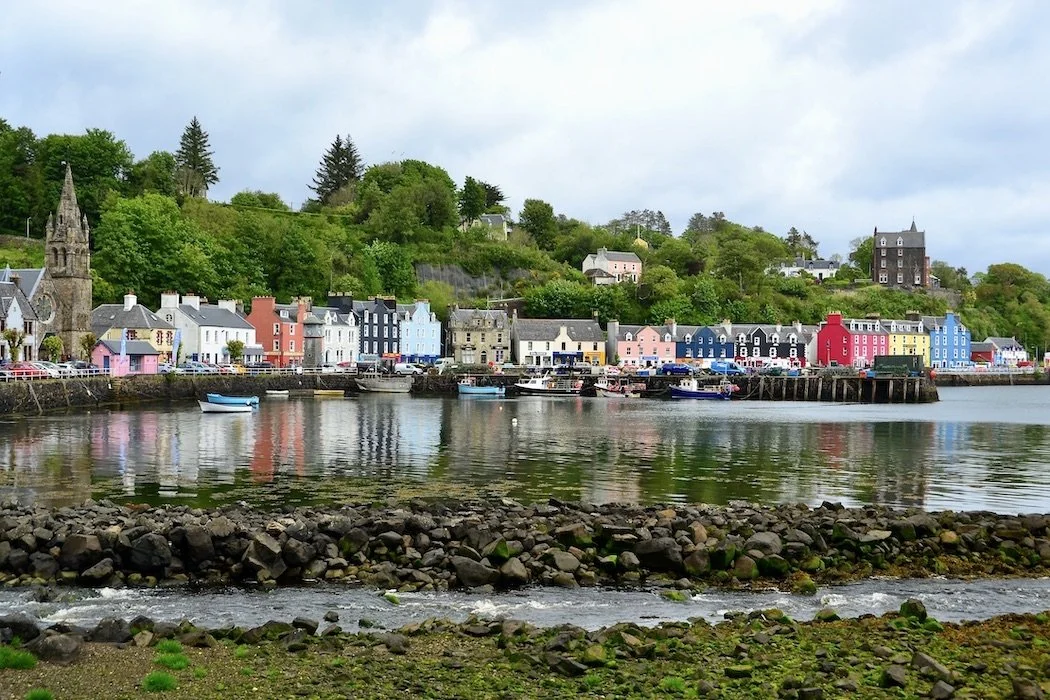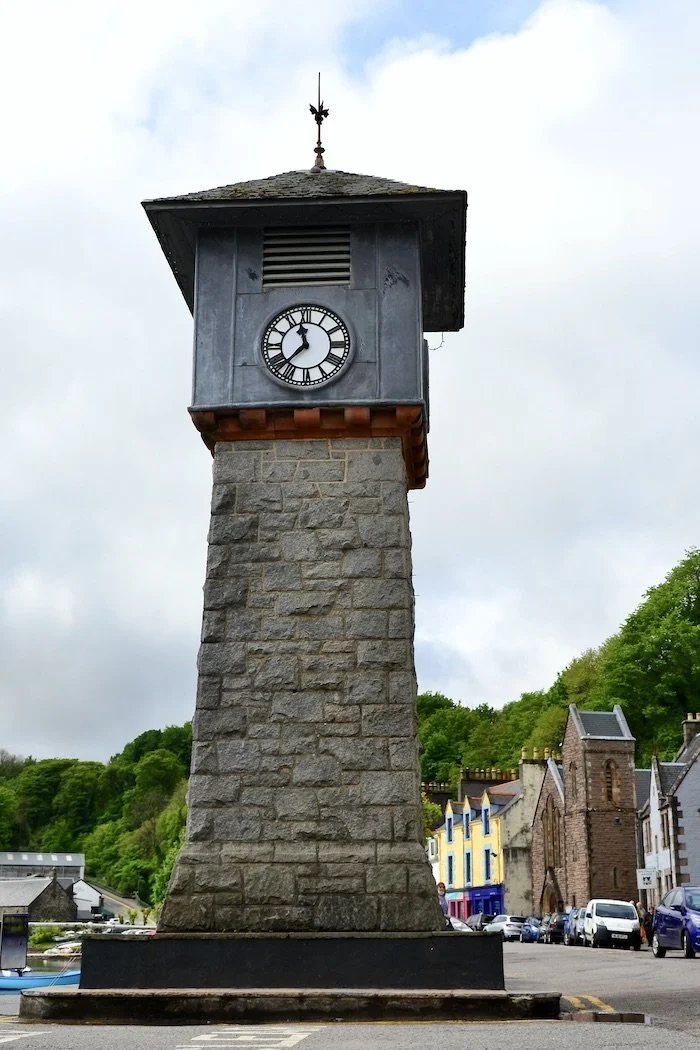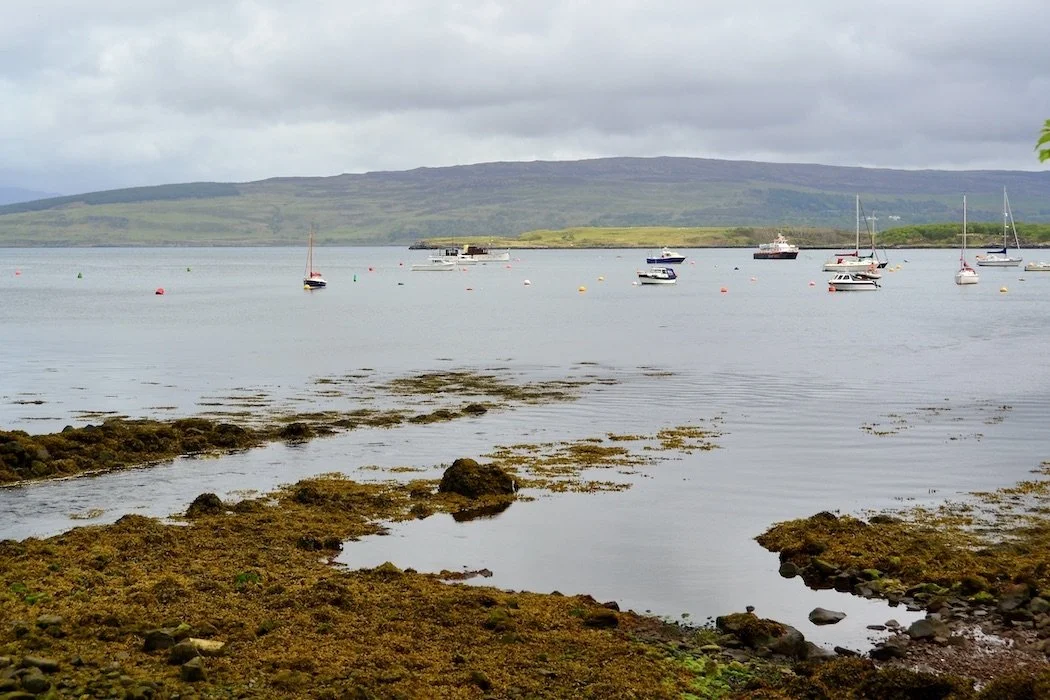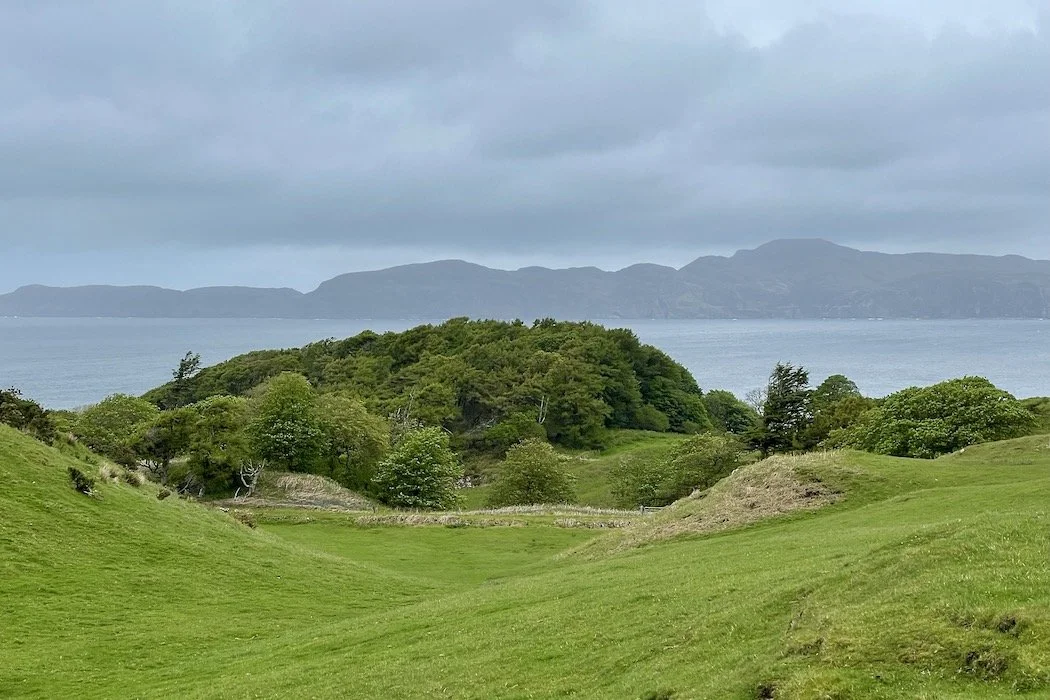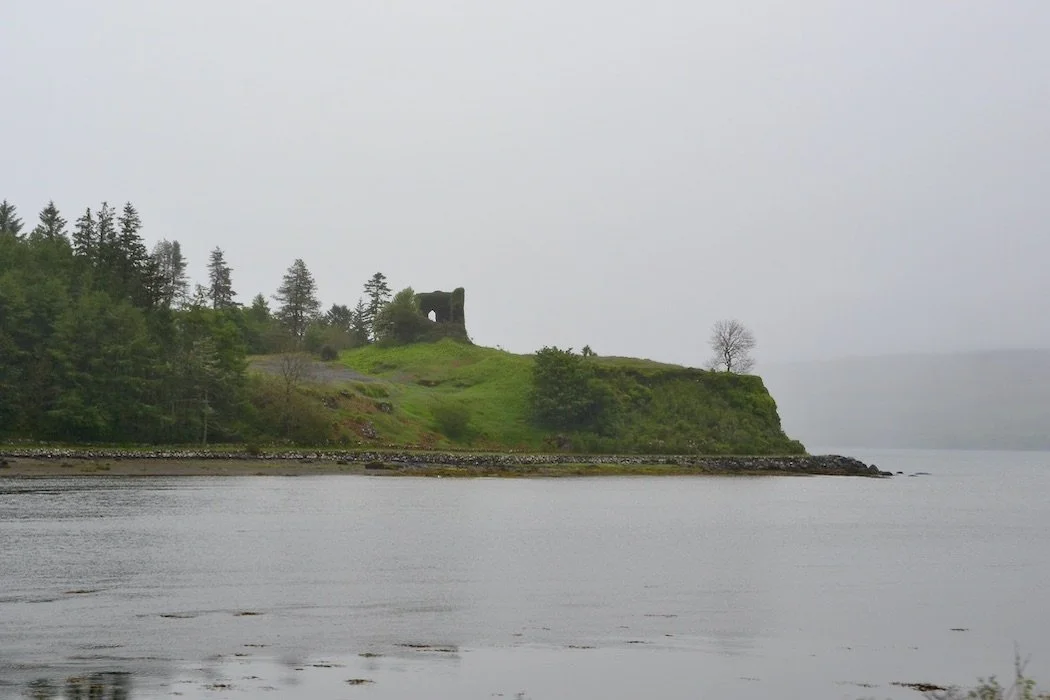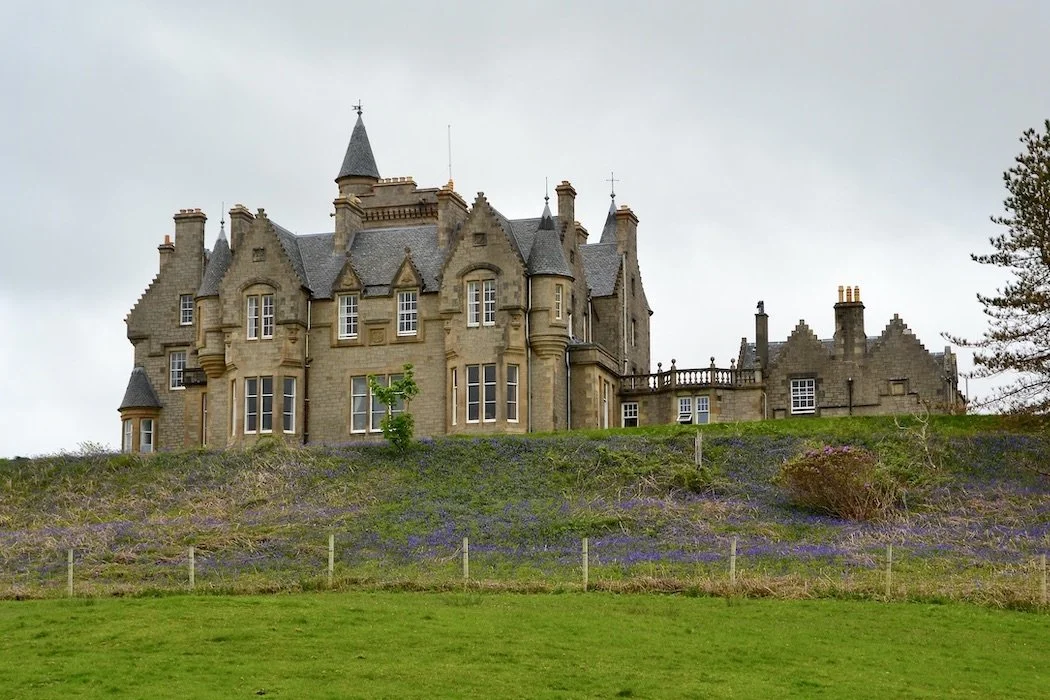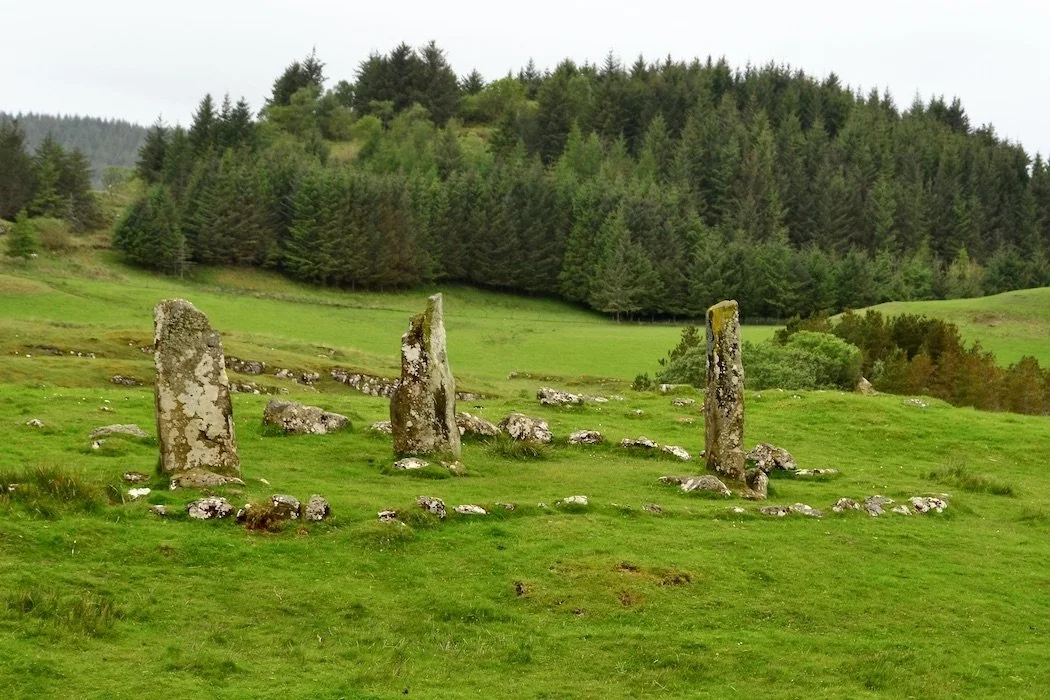Away from the mainstream on Mull
View of Tobermory harbor and town
Sail away from the safe harbor. Catch the trade winds in your sails. Explore. Dream. Discover.” –Mark Twain
Lying just off the west coast of Scotland, the Isle of Mull is the second largest of the Hebrides, an island of numerous peninsulas giving it a long and varied coastline. The rocky peaks and green sloping mountains provide an idyllic spot for getting away from the mainstream and into nature- for wildlife watching, walking, cycling, and boating. Still, history and culture don’t get short shrift amidst the beautiful natural surroundings. And the views do become less dazzling during the median 283 days of rainfall, though when the fog rolls in, Mull becomes dreamy until strong winds blow in and chase the clouds.
Tobermory, meaning Mary’s Well, a bustling harbor town in the north, is the island’s capital and main population center with 900 residents. Situated around a lovely deep, natural harbor, the town is surrounded on the landside by wooded hills and waterfalls. Harborfront Main Street is lined with cafes, restaurants, independent shops, and art galleries, all brightly painted. Beyond the ferry landing, a seaside walkway leads to Tobermory lighthouse. Kayaking and canoeing are popular here, as is diving because a shipwrecked Spanish Galleon is reputed to have sunk nearby, though it is yet to be found. If it rains, the local whisky distillery, an aquarium, and a theater offer cultural refuge.
Another half dozen villages and hamlets dot the island. Salen is centrally located on a bay known for otter and seal sightings, where old, beached fishing boats lie rotting, and Aros Castle ruins stand watch. The Oban ferry lands at Craignure in the southeast, and from Fionnphort in the southwest, ferries sail to Iona, where the ancient abbey, founded in 563 AD by St. Columba, exists still. Near Lochbuie, the island’s majestic prehistoric stone circle stands in a rural field.
Culture on Mull also takes the form of ancient castles, ruined and left, or restored and in use. Glengorm Castle, a 19th-century Baronial-style country house, near Tobermory, is now a B&B with a breathtaking view. From there, a path leads through pastures of grazing sheep to three Standing Stones, then further on to the medieval ruin of Dun Ara. Duart Castle near Craignure was made famous by movies filmed at its well-chosen location dominating the Sound of Mull. Meaning Black Point in reference to its volcanic rock base, Duart is a rare privately-owned castle and the ancestral home of Clan Maclean. Acquired by the family in 1350, it was invaded, attacked, and demolished over the centuries by rival clans or in civil war. Today it stands renovated and open to the public.
Mull boasts wonderful beaches, some secluded, others more accessible. Fidden Beach has pink granite outcroppings and a sandy bay, ideal for sunset viewing. Calgary Bay has Mull’s most easily accessed, broad white-sand beach. Further along the west coast, several streams merge at the Eas Fors Waterfall, forming pools along the way and finally catapulting 100 feet (30 meters) into the ocean. Carsaig Arches on the south coast is a natural amphitheater of basalt cliffs, formed by lava, then carved into arches by the sea, and home to a variety of wildlife including eagles and other birds, feral goats, otters, and seals.
Don’t Miss:
A leisurely day exploring Tobermory.
Serendipity:
Locals along the way- Surprisingly exchanging a word with a Clan Chief in his castle before he disappears into private quarters.
Lunch Tip:
The quirky Gallery Shop and Café in the Tobermory Evangelical Church on Main Street.
Bedtime:
The small, welcoming family-run Toberymory Hotel, in a bright pink building overlooking the sea.
Subscribe for inspiration to have my posts drop directly into your inbox. *If you enjoyed what you read, please share this post with like-minded travelers.*
*All photographs are mine, taken with my Nikon D3100 or iPhone 12 Pro.*

